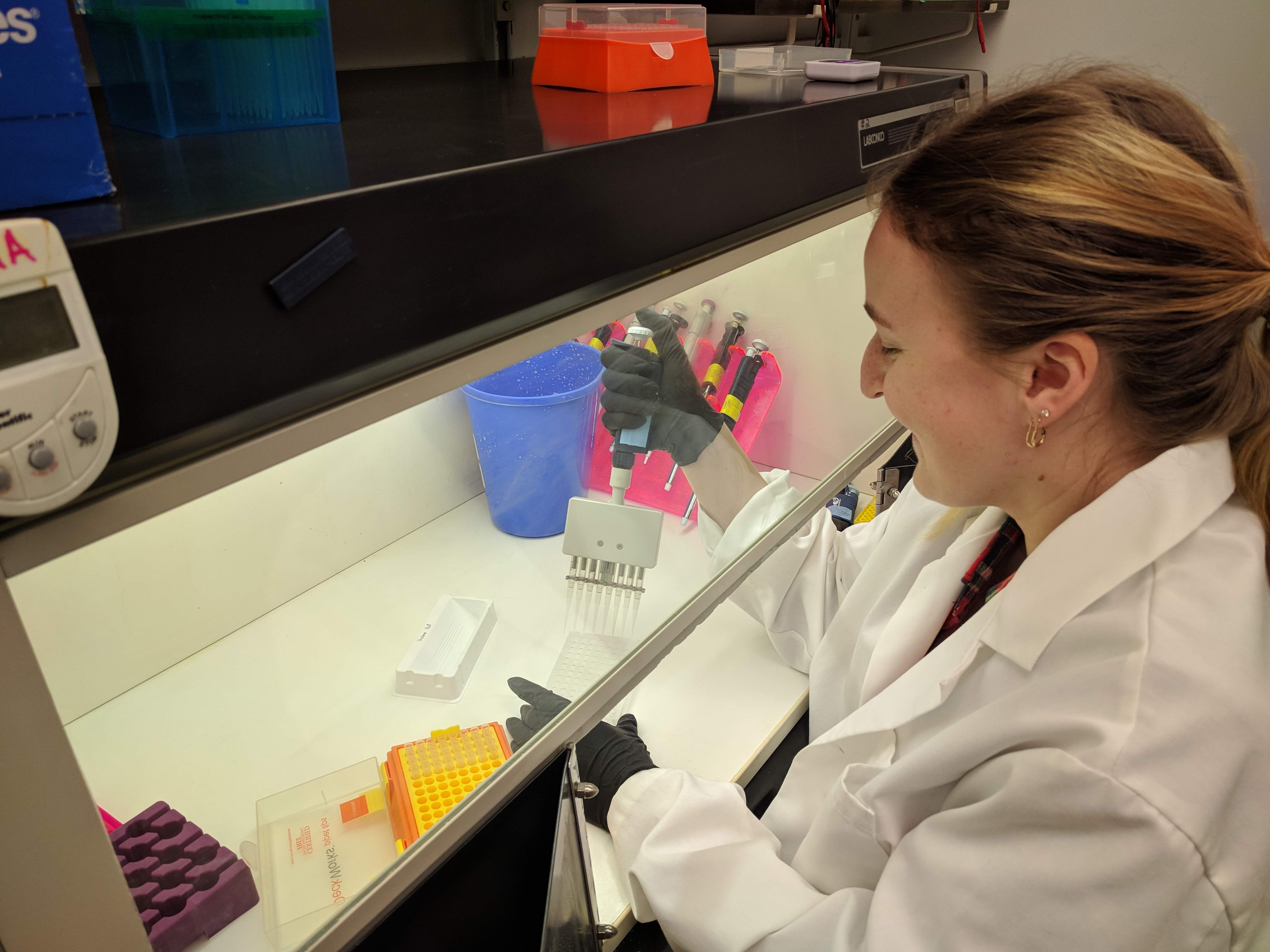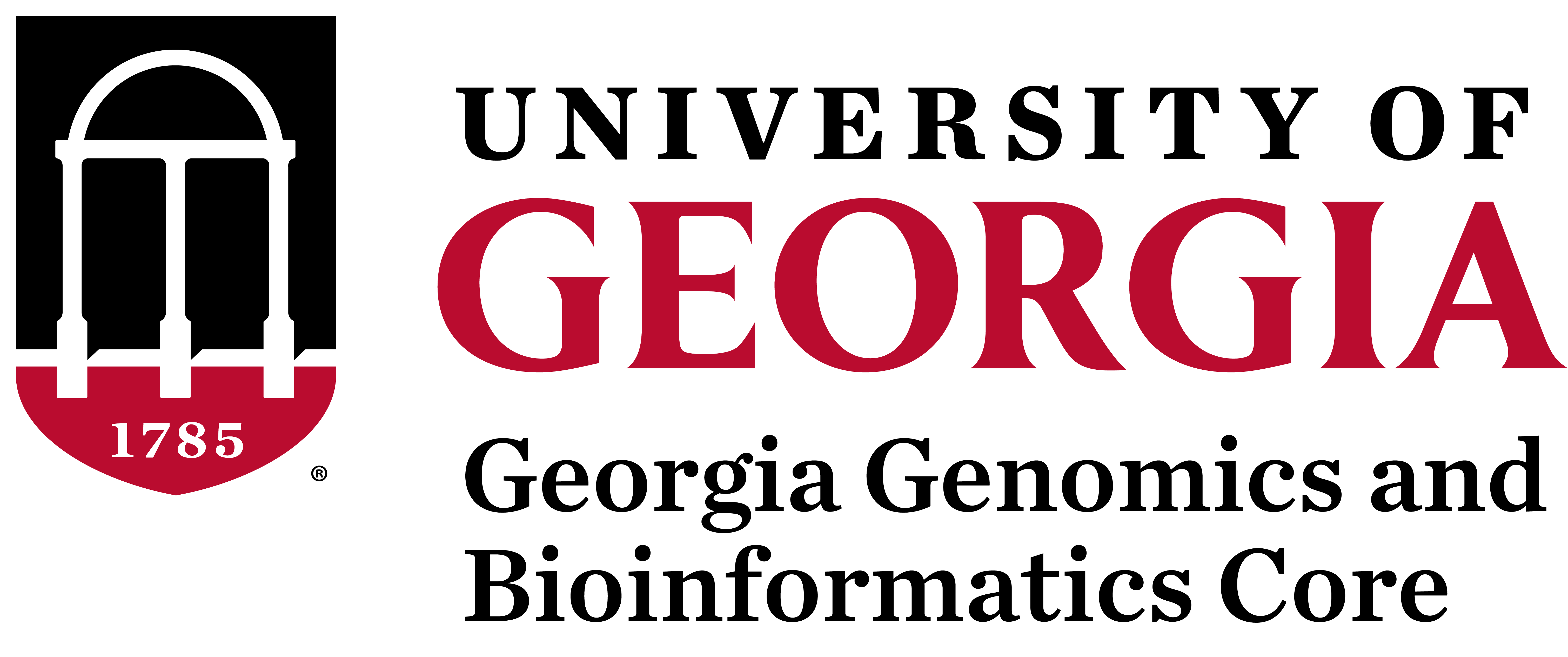Microbiome/Amplicon Service
Summary
Advances in next-generation sequencing technologies have greatly expanded the field of metagenomics (also referred to as community genomics, or environmental genomics), giving researchers better tools to study genetic material from environmental or microbiome samples without cultivating cultures. There are several approaches, applications, and goals within the field of Metagenomics; an important and rapidly growing one is the use of targeted amplicon sequencing to understand the diversity of community samples.
The targeted amplicon approach involves sequencing a phylogenetically informative marker to identify organisms in community samples. The marker used should be present in all of the expected organisms, and, conserved such that the primers can amplify genes from a wide range of individuals but variable enough to offer resolution that is taxonomically useful. A number of different markers are commonly used and of course vary by taxa of interest, but the most commonly used is the 16S rRNA gene for bacterial samples, the 18S for eukaryotes, and ITS for fungal samples.
GGBC uses a targeted amplicon sequencing protocol for Illumina platforms that is simple, cost-effective, and produces good data. In short, the library preparation process involves two PCR steps. The first round of PCR uses target specific primers with overhang sequences to amplify the selected marker and allow for barcoding. In the second round of PCR, Illumina compatible barcodes are added to each amplicon.
GGBC has successfully worked on projects with several different target markers, primers, and types/qualities of samples.
There are several references listed below for further reading and information both on our specific protocol and metagenomics as a whole.

Consultation and Assistance
Contact for Genomics and Bioinformatics Consultation
Email Dr. Walt Lorenz at wlorenz@uga.edu for a consultation on new or existing Genomics and Bioinformatics projects. Also, you can contact Dr. Lorenz for assistance with grant proposals and for obtaining a letter of support from GGBC.
Contact for Microbiome Technical Assistance
For technical questions about existing or new Illumina projects, please contact:
- GGBC (ggbc@uga.edu)
More contacts
Please visit our “All Inquiries” page for detailed information about who you should contact at GGBC to receive a quick and accurate response.
Sample Preparation
As of April 1st, 2022, GGBC implemented the following changes to the Microbiome Amplicon Sequencing Workflow in order to make the greatest use of our time and resources at GGBC to assist the larger genomic community at UGA and beyond.
1. Researchers must amplify the target regions (16S/18S/ITS/etc.) in their laboratories utilizing their specific primers. The specific primers must have overhangs (universal sequence added to the 5’ end of the specific primers to create binding sites for the barcoded primers in the 2nd PCR step) as follows:
5’ TCGTCGGCAGCGTCAGATGTGTATAAGAGACAG-Forward-Specific-Primer-Sequence 3’
5’ GTCTCGTGGGCTCGGAGATGTGTATAAGAGACAG-Reverse-Specific-Primer-Sequence 3’
2. Researchers must give evidence of an acceptable target region amplification and the lack of secondary PCR products. This can be a good-resolution gel image or bioanalyzer DNA or fragment analyzer NGS traces. The latter two can be done at GGBC for a fee.
3. Researchers are encouraged to use beads or columns to separate the specific target amplificons from free primers and nucleotides. If they can’t do this step in their laboratories, it can be done at GGBC.
4. Researchers must submit at least 15 µl of the amplicon products in a 96-well v-bottom plates.
With these modifications, the New Microbiome Amplicon Sequencing Workflow will include the following steps:
-
Clean the initial PCR product provided by the researcher, if necessary.
-
Check the concentration with the Synergy HT plate reader.
-
Performing the second PCR to add the barcoded Illumina adapters to all samples.
-
Clean the second PCR products using Ampure Beads.
-
Determine the concentration using the Synergy HT plate reader.
-
Assess a randomly selected set of samples to determine the size of the library using the Fragment Analyzer.
-
Pooling the barcoded libraries using equimolar ratio.
-
Determine the size of the pooled library using the Fragment Analyzer.
-
Clean the pool with Ampur beads if necessary.
-
Determine the pool concentration using Qubit and qPCR.
-
Sequencing.
*Under special circumstances we will accept projects that need to be started from gDNA and taken through the PCR1 target region amplification. Please contact us for further information.
Primers Currently Available at GGBC
| Primer Name | Literature Names | Target Region | Expected size | Specific Primers | Reference |
|---|---|---|---|---|---|
| Klindworth 16S V1V3 | 27F For. Over | 16S: V1-V3 | ~527 | AGAGTTTGATCMTGGCTCAG | Klindworth et al., 2013 |
| 518 Rev. Over | GTATTACCGCGGCTGCTGG | ||||
| Klindworth 16S V4 | F S-D-Bact-0564-a-S-15 | 16S: V4 | ~253 | AYTGGGYDTAAAGNG | Klindworth et al., 2013 |
| R S-D-Bact-0785-b-A-18 | TACNVGGGTATCTAATCC | ||||
| Bradley 18S V4 | 18S_EukV4F | 18S: V4 | 418 | CCAGCASCYGCGGTAATTCC | Bradley et al. 2016, Zhao et al. 2019 |
| 18S_EukV4R | ACTTTCGTTCTTGATYRA | ||||
| Quince 16S V4V5 | 16S_Bac515F-Y | 16S: V4-V5 | 400-500 | GTGYCAGCMGCCGCGGTAA | Quince et al., 2011; Parada et al., 2016 |
| 16S_Bac926R | CCGYCAATTYMTTTRAGTTT | ||||
| 16S V3V6 | 16S-338F | 16S:V3-V6??? | ACTCCTACGGGAGGCAGCAGT | ||
| 16S-1052R | CGAGCTGACGACAYCCATGCA | ||||
| Taylor ITS2 | 18S_5.8S-Fun | ITS2 | 267-511 | AACTTTYRRCAAYGGATCWCT | Lee Taylor et al., 2016 |
| 18S_ITS4_Fun | AGCCTCCGCTTATTGATATGCTTAART | ||||
| Caporaso 16S V4 | 515f forward | 16S: V4 | 300-350 | GTGYCAGCMGCCGCGGTAA | Caporaso et al., 2011 |
| 806rB Reverse | GGACTACNVGGGTWTCTAAT | ||||
| H9 1862R | H9 | TTACCTGGTCCGGACATCAA | |||
| Reverse Primer-1862R | ATTGTAGCGCGCGTGCAG | ||||
| Stoek 18S V9 | Euk1391F | 18S: V9 | ~260 | GTACACACCGCCCGTC | Amaral-Zettler et al. (2009) and Stoek et al. (2010) |
| EukBr | TGATCCTTCTGCAGGTTCACCTAC | ||||
| Caporaso 16S V4 | 16s-515FB forward | 16S: V4 | 300-350 | GTGYCAGCMGCCGCGGTAA | Modified from Caporaso et al. (2011) |
| 16s-806RB Reverse | GGACTACNVGGGTWTCTAAT | ||||
| White ITS1 | ITS1-F Forward | ITS1 | 200-600 | CTTGGTCATTTAGAGGAAGTAA | White et al. (1990) |
| ITS2-R Reverse | GCTGCGTTCTTCATCGATGC | ||||
| Kindworth V3V4 | S-D-Bact-0341-b-S-17 (for) | 16S: V3-V4 | ~464 | CCTACGGGNGGCWGCAG | Kindworth et al (2013), Illumina |
| S-D-Bact-0785-a-A-21 (rev) | GACTACHVGGGTATCTAATCC | ||||
| Beckers V5V7 | 799F- | 16s: V5-V7 | 420 | AACMGGATTAGATACCCKG | Beckers et al 2016; Bodenhausen et al., 2013 |
| 1193R- | ACGTCATCCCCACCTTCC | ||||
| Vylgalys LSU | LSU-LRoR (forward) | LSU | 550-700 | ACCCGCTGAACTTAAGC | Vilgalys and Hester 1999 |
| LSU-LR5 (reverse) | TCCTGAGGGAAACTTCG | ||||
| Glass Bt2 | Bt2a (forward) | Beta-tublin | ~470 | GGTAACCAAATCGGTGCTGCTTTC | Glass and Donaldson 1995 |
| Bt2b (Reverse) | ACCCTCAGTGTAGTGACCCTTGGC | ||||
| Hume ITS2 | SYM_VAR_5.8SII | ITS-2 | ~400 | GAATTGCAGAACTCCGTGAACC | Hume et al. 2013, 2015 |
| SYM_VAR_REV | CGGGTTCWCTTGTYTGACTTCATGC | ||||
| Miya 12S | MiFish-U-F | 12S | ~160-180bp | GTCGGTAAAACTCGTGCCAGC | Miya et al., 2015. |
| MiFish-U-R | CATAGTGGGGTATCTAATCCCAGTTTG | ||||
| LerayCOI | LerayCOI_FOR | Co1 | GGATACATGGATTGAACATGTATTACTCCCTCC | ||
| LerayCOI_REV | TAATCGACCTTCATCGGGAGTGATCGCCAGAAAGAACTCA | ||||
| ZBJ COI | ZBJ-ArtF1c: | COI-Arthropods | 157 | AGATATTGGAACWTTATATTTTATTTTTGG | Zeale et al. (2011) |
| ZBJ-ArtR2c: | WACTAATCAATTWCCAAATCCTCC | ||||
| Braukman COI | MLepF1 (forward) | COI | 407 | GCTTTCCCACGAATAAATAATA | Braukman et al., 2019 |
| LepR1 (reverse) | TAAACTTCTGGATGTCCAAAAAATCA | ||||
| HCO2198 (reverse) | TAAACTTCAGGGTGACCAAAAAATCA | ||||
| UniPlant ITS2 | UniPlantF | ITS2 | 187-387 | TGTGAATTGCARRATYCMG | Moorhouse-Gann et al., 2018 |
| UniPlantR | CCCGHYTGAYYTGRGGTCDC | ||||
| Zhao 18S V5V7 | FW-F817 | 18S: V5-V7 | 379 | TTAGCATGGAATAATRRAATAGGA | Zhao et al., 2019 |
| REV-R1196 | TCTGGACCTGGTGAGTTTCC | ||||
| PacBio 16S | 27F27F | 16S | AGRGTTYGATYMTGGCTCAG | PacBio 16S protocol | |
| 14292R | RGYTACCTTGTTACGACTT | ||||
| Gibson COI | ArF5 | COI | GCICCIGAYATRKCITTYCCICG | Gibson et al. (2014) | |
| ArR5 | GTRATIGCICCIGCIARIACIGG | ||||
| PDS | PDSABASGSP-F | Hybrid poplar | ATCCTTTCGYTCTTCTCCGC | ||
| PDSABASGSP-R | TRAAACCATCTTGAGCCTCAACATA | ||||
| GUX | GUX1ABASGSP-F | Hybrid poplar | ACAGRTGGATTTGGGGRGGA | ||
| GUX1ABASGSP-R | GGATAAAAYCCYYTGGCAGA | ||||
| TBL | TBL31ASGSP2,091-F | Hybrid poplar | GGTGGTTGCATGGAGCTTTG | ||
| TBL31ASGSP2,502-R | ACCAGGTAAGGGCAGCTTTC | ||||
As we get more information or new primers, the table will be updated.
Prices and Quotes
Contact for Financial Inquiries and Quote Requests
Please email Kim and Elizabeth at ggbc@uga.edu, for financial inquiries or to request a quote. Be as specific as possible, so that they can more quickly assist you.
Table 1. Illumina compatible library preparation fees
| llumina Compatible Library Type (submitted in 96 well plate) | UGA Fee | Non-UGA Fee | Commercial Fee |
|---|---|---|---|
| Amplicon specific primers with overhang (if necessary) | $150.00 | $177.00 | $188.00 |
| DNA/PCR product clean up (per half plate) | $98.00 | $116.00 | $123.00 |
| DNA/PCR product clean up (per plate) | $191.00 | $226.00 | $239.00 |
| Modified Amplicons (16S/ITS/Custom)(up to 48 samples per plate) | $457.00 | $540.00 | $572.00 |
| Modified Amplicons (16S/ITS/Custom)(49 to 96 samples per plate) | $681.00 | $804.00 | $852.00 |
Table 2. Library pooling and pre-sequencing QC fees
| Service Description | UGA Fee | Non-UGA Fee | Commercial Fee |
|---|---|---|---|
| Library Pooling up to 2-24 samples | $60 | $71 | $75 |
| Library Pooling up to 25-48 samples | $105 | $124 | $132 |
| Library Pooling up to 49-96 samples | $162 | $192 | $203 |
| Library Pooling up to 97-144 samples | $234 | $277 | $293 |
| Library Pooling up to 145-192 samples | $306 | $362 | $383 |
| Library Pooling up to 193-288 samples | $436 | $515 | $545 |
| Library Pooling up to 289-384 samples | $565 | $667 | $707 |
| Pre-Sequencing QC (Qubit, FA, Kapa) | $120 | $142 | $150 |
Table 3. Illumina run types
| Run Type | Expected number of reads passing filter (million)a | Expected total number of basesa | UGA Fee | Non-UGA Fee | Commercial Fee |
|---|---|---|---|---|---|
| MiSeq (500 Cycles) (v2) flow cell; PE250 | 24-30 | 7.5-8.5 Gb | $1,932 | $2,280 | $2,415 |
| NextSeq2000 (600 Cycles) flow cell (P1); PE300 | 200 | 60 Gb | $2,493 | $2,942 | $3,117 |
| NextSeq2000 (600 Cycles) flow cell (P2); PE300 | 600 | 180 Gb | $4,709 | $5,557 | $5,887 |
References
References for further information
Peer reviewed articles –
Broad review of metagenomics:
Xu, Jianping. 2006. Microbial ecology in the age of genomics and metagenomics: concepts, tools, and recent advances. Molecular Ecology. 15:1713-1731.
Details and development of the targeted amplicon sequencing method on which our and Illumina’s protocols are based:
Bybee, S.M, et. al. 2011. Targeted Amplicon Sequencing (TAS): A Scalable Next-Gen Approach to Multilocus, Multitaxa Phylogenetics. Genome Biology and Evolution. 3:1312-1323.
Validation of suitability and accuracy of Illumina platforms for community amplicon sequencing:
Caporaso, J.G., et. al.. 2012. Ultra-high-throughput microbial community analysis on the Illumina HiSeq and MiSeq platforms. The ISME Journal. 6:1621-1624.
Primer evaluation for 16S studies:
Klindworth, A. 2012. Evaluation of general 16S ribosomal RNA gene PCR primers for classical and next-generation sequencing-based diversity studies. Nucleic Acids Research. 41:1
Review of metagenomics focused on public health and clinical microbiology:
Forbes, J.D., et.al. 2017. Metagenomics: the next culture-independent game changer. Frontiers in Microbiology. 8:1069
Other good sources of information –
